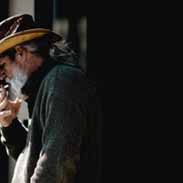Biochemistry – Carbohydrates Answers – Flashcards
Unlock all answers in this set
Unlock answersquestion
Carbohydrates
answer
There are three types:- Monosaccharides Disaccharides Polysaccharides
question
Monosaccharides
answer
= 1 sugar unit
question
Disaccharides
answer
= 2 sugar units
question
Polysaccharides
answer
= many sugar units
question
Monosaccharides
answer
These are sweet tasting and soluble
question
Monosaccharides
answer
They have the general formula c6h12o6
question
Glucose
answer
is one of the best know monosaccharides. It is a hexose and has the formula C6H12O6
question
Glucose
answer
The atoms of carbon, hydrogen and oxygen in a monosaccharide form a ring, and can be arranged in different ways
question
Glucose
answer
These differences are shown by letters in front of the name - for example & glucose.
question
Glucose
answer
Molecules that have the same atoms, but in different arrangements are called isomers
question
Glucose
answer
The differences are usually only small, but can give the molecules different properties
question
Disaccharides
answer
Are formed of two monosaccharides, joined together with a glycosidic bond - this is a condensation reaction which means that one molecule of water is lost
question
Disaccharides
answer
Glucose + glucose = maltose Glucose + galactose = lactose Glucose + fructose = sucrose
question
Condensation reaction
answer
Here are two monosaccharides joining to make a disaccharide. The carbons on each ring are numbered, starting with the carbon after the oxygen. Here the 1st carbon on one ring is joining with the 4th carbon on another ring. So it is known as a 1,4 glycosidic bond
question
disaccharide
answer
When water is added to a disaccharide under suitable conditions, it breaks the glycosidic bond into its original monosaccharides. This is called hydrolysis (breakdown by water). The breakdown is very slow unless it is catalysed by an appropriate enzyme
question
Tests for reducing sugars
answer
All monosaccharides and some disaccharides are reducing sugars. This means they are capable of reducing Benedict's solution. When a reducing sugar is heated with Benedict's solution, the colour changes from blue to orange/red
question
Test for non-reducing sugars
answer
Some disaccharides are non-reducing. That means they will have no effect on Benedict's solution. There is no direct test for these sugars. We have to hydrolyse them (breaking the glycosidic bond) using dilute acid, and then we can use the benedict's test
question
Roles of monosaccharides and disaccharides
answer
Their main role is as a respiratory substrate - that is, animals and plants use them in their cells to release energy. The process that takes these sugars and releases energy is called respiration
question
Polysaccharides
answer
The combining of many monosaccharides forms a polymer known as a polysaccharide
question
Polysaccharides
answer
The monosaccharides are joined with glycosidic bonds. The resulting chains may vary in length, be branched or unbranched and be folded in different ways
question
Polysaccharides
answer
These macromolecules are insoluble. There are 3 main types you have to know about - Starch, Glycogen and Cellulose
question
Starch
answer
An insoluble store of glucose found in plants, and a major component of foods. Starch is a mixture of two substances - amylose and amylopectin
question
Amylose
answer
-glucose 1,4 glycosidic bonds Spiral structure
question
Amylopectin
answer
-glucose 1,4 and some 1,6 glycosidic bonds Branched structure
question
Starch
answer
About 80% of starch is amylopectin and the remaining 20% is amylose
question
Starch
answer
The main role of starch is for energy storage
question
The main role of starch is for energy storage
answer
It is insoluble, so does not have any osmotic effect, i.e. does not draw water into the cells. Being insoluble, it does not easily diffuse out of cells. It is compact - a lot can be stored in a small place. When hydrolysed, it forms glucose, which is easily transported and readily used in respiration to provide energy
question
Glycogen
answer
Glycogen is very similar in structure to amylopectin - made of many units of - glucose, joined in 1,4 and 1,6 glycosidic bonds
question
Glycogen
answer
The main difference is that the chains in glycogen tend to be shorter and more branched than those of amylopectin
question
Glycogen
answer
It is sometimes called 'animal starch' because it is the main unit of carbohydrate storage in animals
question
Glycogen
answer
It readily hydrolyses to - glucose when needed
question
Cellulose
answer
The big difference here is that cellulose is made up of monomers of -glucose rather than - glucose. The bonds are 1,4 glycosidic bonds
question
Cellulose
answer
Rather than forming a coiled chain, cellulose has straight, unbranched chains that run parallel to one another
question
Cellulose
answer
Hydrogen bonds form between these parallel chains, adding to the stability of the molecule
question
Cellulose
answer
Chains can be bundled together giving great strength
question
Cellulose
answer
Cellulose makes up 50% of a plant cell wall and its stability makes it hard to digest. Some animals have microorganisms in their gut that digest cellulose. Cotton and rayon fabrics are mainly cellulose. Paper is probably the best known and most widely used cellulose product



